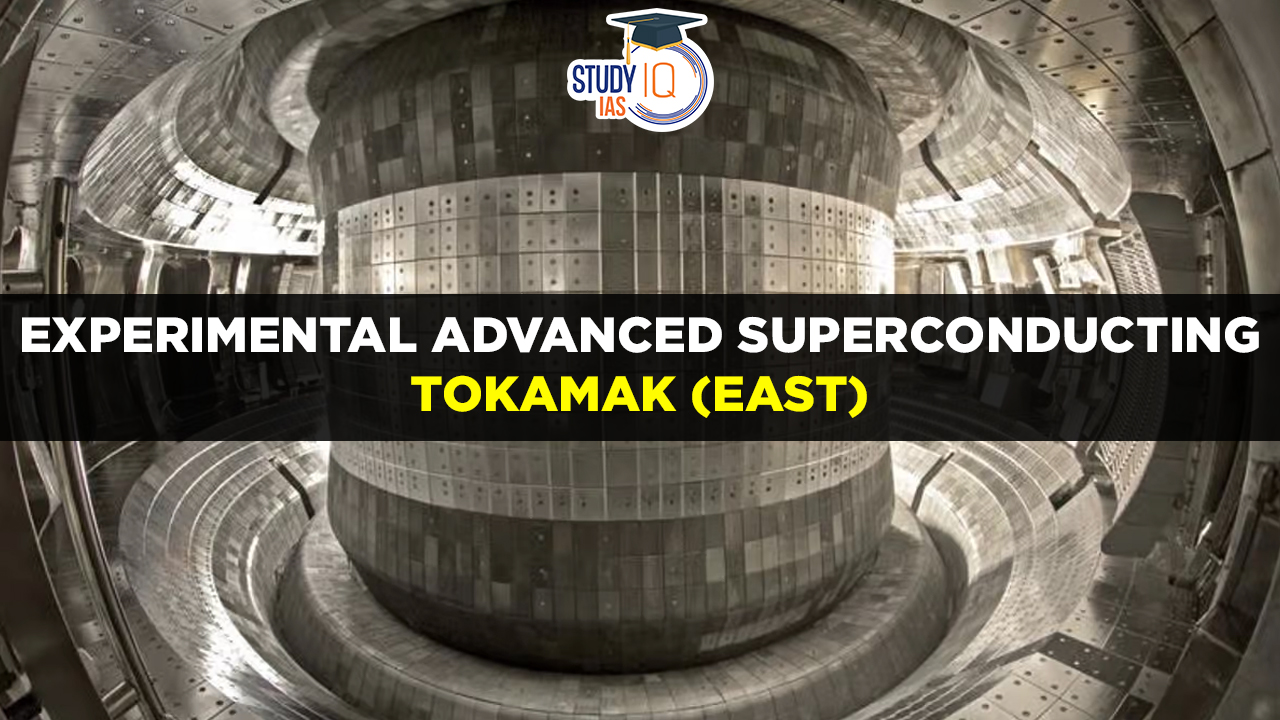Table of Contents
The Experimental Advanced Superconducting Tokamak (EAST) is a fusion research device located in Hefei, Anhui Province, China. It is one of the leading experimental facilities in the world for the study of nuclear fusion, which is a process that powers the sun and other stars. Fusion has the potential to provide a nearly limitless and clean source of energy, as it involves combining light atomic nuclei to release a tremendous amount of energy.
Experimental Advanced Superconducting Tokamak (EAST)
China’s Experimental Advanced Superconducting Tokamak (EAST), designed to replicate the energy generation process of the sun, recently achieved a groundbreaking milestone by sustaining temperatures of 216 million degrees Fahrenheit (120 million degrees Celsius) for 101 seconds. Furthermore, it reached a peak temperature of 288 million degrees Fahrenheit (160 million degrees Celsius) for 20 seconds, surpassing the sun’s core temperature by more than tenfold.
We’re now on WhatsApp. Click to Join
What is Artificial Sun’ EAST?
The Experimental Advanced Superconducting Tokamak (EAST) reactor is a cutting-edge nuclear fusion research facility situated at the Institute of Plasma Physics within the Chinese Academy of Sciences (ASIPP) in Hefei, China. Its primary objective is to emulate the nuclear fusion process, the very process that fuels the sun.
China operates three major tokamaks within the country, namely the EAST, the HL-2A reactor, and J-TEXT. In a significant achievement in December 2020, China successfully powered up the HL-2M Tokamak, which stands as the country’s largest and most advanced nuclear fusion research apparatus, marking a pivotal moment in the advancement of China’s nuclear energy research capabilities.
Since its commencement of operations in 2006, the EAST has continuously set records for maintaining extremely high-temperature plasma confinement. The EAST project is integral to the International Thermonuclear Experimental Reactor (ITER) initiative, which, upon its planned activation in 2035, will become the world’s largest nuclear fusion reactor. This global collaboration involves contributions from various countries, including India, South Korea, Japan, Russia, and the United States.
Experimental Advanced Superconducting Tokamak (EAST) Function
The EAST Tokamak device functions by replicating the nuclear fusion process that naturally occurs in stars, including our sun. Nuclear fusion is a method of generating substantial energy without producing significant waste products, unlike nuclear fission, which involves splitting the nucleus of a heavy atom into lighter nuclei.
Fission, while easier to achieve, results in the production of substantial nuclear waste and can pose safety and environmental risks. In contrast, fusion does not emit greenhouse gases and is considered a safer process with lower accident risks. When successfully harnessed, nuclear fusion has the potential to provide virtually unlimited clean energy at a low cost.
In the EAST Tokamak, the process of nuclear fusion is initiated by subjecting hydrogen atoms to extreme heat and pressure, causing them to merge. Specifically, the nuclei of deuterium and tritium, both isotopes of hydrogen, are induced to combine, forming a helium nucleus, a neutron, and a substantial amount of energy.
To achieve fusion, the fuel is heated to temperatures exceeding 150 million degrees Celsius, forming a high-temperature plasma composed of subatomic particles. This superheated plasma is effectively contained within the device by utilizing a powerful magnetic field, preventing it from cooling down and thus preserving its capacity to generate significant energy. Maintaining the plasma for extended durations is crucial for the fusion process to take place effectively.
Experimental Advanced Superconducting Tokamak (EAST) Current Status
China’s EAST reactor recently achieved a groundbreaking milestone by reaching a plasma temperature of 216 million degrees Fahrenheit and maintaining it for 20 seconds, surpassing the sun’s core temperature by over tenfold. The next objective is to sustain this high temperature for longer periods. While this is a significant development for China’s green energy efforts, experts anticipate it will take approximately three decades before a fully functioning artificial sun becomes a reality. South Korea’s KSTAR reactor achieved a similar feat in 2020 by maintaining a plasma temperature of over 100 million degrees Celsius for 20 seconds.
Experimental Advanced Superconducting Tokamak (EAST) Advantages
The Experimental Advanced Superconducting Tokamak (EAST) offers several advantages in the field of nuclear fusion research and clean energy production:
- Nuclear Fusion Research: EAST serves as a crucial tool for advancing our understanding of nuclear fusion, the process that powers the sun and stars. It enables scientists to study plasma behavior, magnetic confinement, and other aspects of nuclear fusion, contributing to the development of commercial fusion power.
- Clean and Limitless Energy: Nuclear fusion, when harnessed successfully, offers a nearly limitless source of clean energy. EAST plays a pivotal role in the research and development of fusion technology, which has the potential to provide abundant, carbon-free energy with minimal waste.
- Low Environmental Impact: Unlike nuclear fission, which generates radioactive waste, nuclear fusion is inherently safer and produces minimal waste, making it an environmentally friendly energy source. EAST’s research contributes to safer and cleaner energy solutions.
- Reduced Greenhouse Gas Emissions: Fusion does not emit greenhouse gases, offering a sustainable energy alternative that can help mitigate climate change. EAST’s work aligns with global efforts to reduce carbon emissions.
- International Collaboration: EAST is part of the International Thermonuclear Experimental Reactor (ITER) project, which involves contributions from multiple countries. This collaborative effort fosters international cooperation and knowledge sharing in the pursuit of fusion energy.
- Technological Advancements: Research conducted at EAST has led to technological advancements in superconducting materials, magnetic confinement, and plasma physics, which have applications beyond fusion research.
- Energy Security: Fusion has the potential to enhance energy security by providing a reliable and abundant energy source, reducing dependence on fossil fuels and mitigating energy supply fluctuations.
Artificial Sun’ EAST UPSC
China’s “Artificial Sun,” the Experimental Advanced Superconducting Tokamak (EAST), is a cutting-edge nuclear fusion research device located in Hefei. EAST aims to replicate the nuclear fusion process occurring in the sun, offering a clean and virtually limitless energy source. It uses intense heat and pressure to fuse hydrogen atoms, releasing substantial energy. The recent achievement of sustaining plasma temperatures of 216 million degrees Fahrenheit for 101 seconds, with a peak of 288 million degrees, represents a significant milestone. While challenges remain, EAST’s success contributes to the development of safe, sustainable, and low-waste nuclear fusion as a potential solution to the world’s energy needs.


 Mental Healthcare in India, Scope and Go...
Mental Healthcare in India, Scope and Go...
 Most Commonly Used Cancer Drugs and Thei...
Most Commonly Used Cancer Drugs and Thei...
 India Launched AI-Powered Traffic Manage...
India Launched AI-Powered Traffic Manage...





















